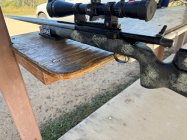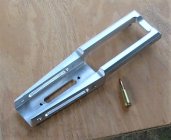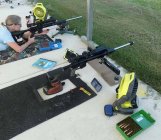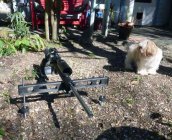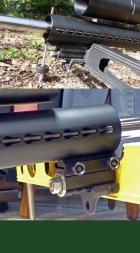There are two types of rotation that affect a rifle as it is shot from a rest. This discussion has been about the rifle rotating around the CL of the bore, and effect that comes from bullet weight and velocity combined with rifling twist. The other type of rotation comes from the rifle's center of gravity being offset from the line of thrust, which causes the rifle to rotate around its center of mass, around an axis that is perpendicular to the bore, running through the CG. Stock design can affect both.
Some years ago, before the current crop of pickle fork F Open stocks, I made an adapter for an old 40X prone stock that did something similar. The effect of how the rifle reacted as it was shot was quite noticeable. Things calmed down quite a bit. It tracked better, and torque seemed to be less of an issue. Although I do not have one, I believe that this is the reason for the longer stocks being used by top shooters in short range benchrest. Typically in that sport, state of the art stocks have the rear bag contact area as high relative to the line of the bore as is possible. I believe that free recoil shooting style is the reason for this. It may be less effective for torque control, but the extra length of the latest crop of wood and carbon fiber stocks might reduce that effect. What it does for sure is move the center of gravity closer to the bore, which has been demonstrated to reduce the amplitude of the vertical component of barrel vibration significantly.
As an aside a friend has an almost magical HV rifle that is perfectly balanced around the CL of the bore. He put a weight between the rings, on top of the action, that accomplishes this.
The bottom line in all of this is that there are so many variables that we really need to do testing to determine what the effect will be on the target, and in the bags.
Added a little later: One factor that seems to have been missed here is that for a given forend width the closer the bag tracking surface is to the bore CL the greater the effect will be for controlling the effect torque. If you look at the previously mentioned picklefork stocks they take maximum advantage of this. Here is a video of an unusual stock that has the bag contact very close to the barrel. The rifle is a .284 being shot free recoil with 175 grain bullets. It comes straight back, with no noticeable torque. It may be that the depth of the butt is also a contributing factor.










